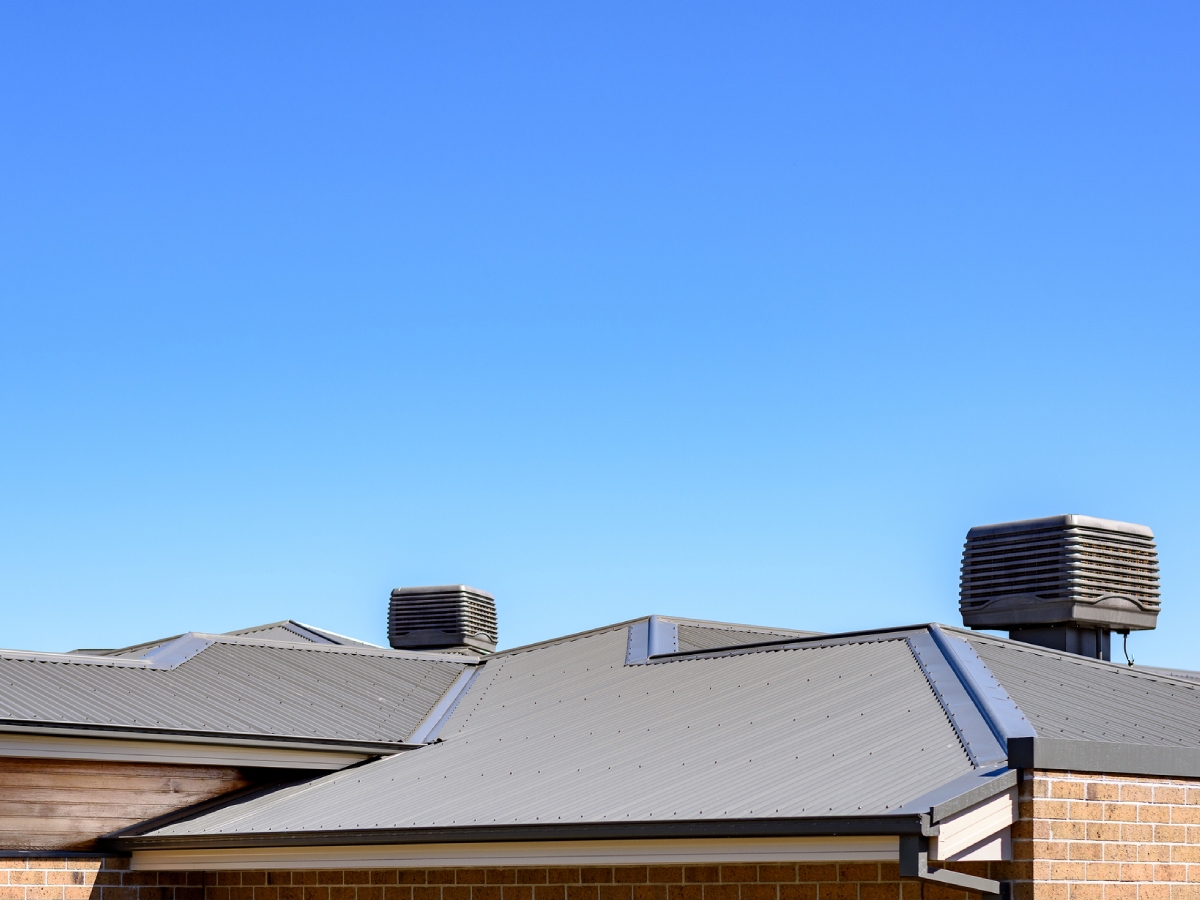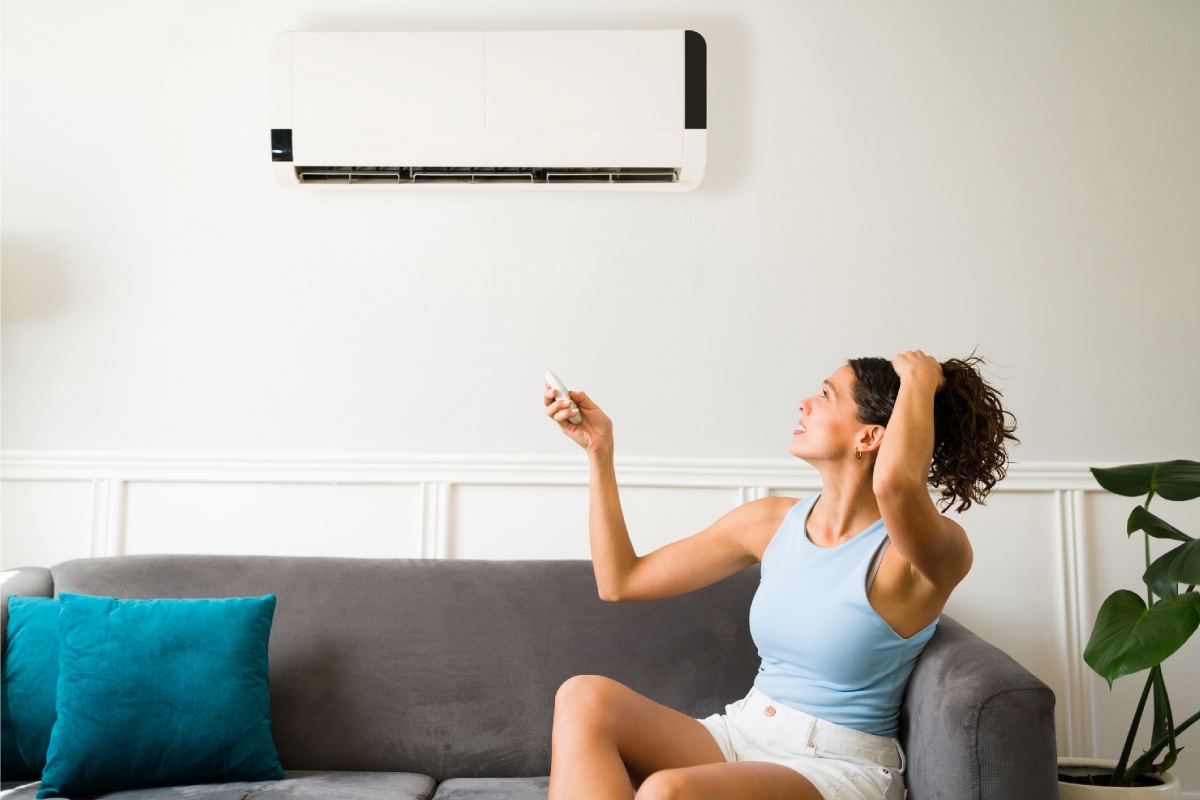
Swamp Coolers Vs. Air Conditioners
When it comes to cooling homes, two common options are air conditioners and swamp coolers. While both devices aim to lower indoor temperatures, they operate on fundamentally different principles and are suited to distinct climate conditions. For homeowners in the Carolinas, understanding these differences is crucial for making the right choice.
How Air Conditioners Work
Air conditioners use a refrigeration cycle to cool indoor air. Here’s a summarized step-by-step breakdown of the process:
- Refrigerant Circulation: A refrigerant, a chemical compound, circulates through a closed system of coils and undergoes phase changes from liquid to gas and back.
- Heat Absorption: Inside the house, the refrigerant absorbs heat from the indoor air via the evaporator coil, cooling the air in the process.
- Heat Release: The heated refrigerant is then compressed and sent to the outdoor condenser coil, where it releases the absorbed heat to the outside environment.
- Air Circulation: The cooled air is circulated back into the living space using a fan and ductwork.
This process effectively lowers indoor temperatures and can control humidity levels, making air conditioners suitable for a wide range of climates.
How Swamp Coolers Work
Swamp coolers, also known as evaporative coolers, rely on the principle of evaporation to cool air. Here’s how they work:
- Water Saturation: The cooler has pads that are saturated with water from an internal reservoir.
- Airflow: A fan draws warm outside air through the wet pads.
- Evaporation and Cooling: As the warm air passes through the pads, water evaporates, absorbing heat and cooling the air.
- Air Circulation: The cooled, moist air is then blown into the living space.
Swamp coolers add moisture to the air and are most effective in hot, dry climates where the humidity is low.
Key Differences
- Cooling Mechanism: Air conditioners use refrigerants and a mechanical cycle to cool and dehumidify the air, while swamp coolers rely on evaporative cooling and add moisture to the air.
- Humidity Control: Air conditioners can reduce humidity levels, making them suitable for humid environments. Swamp coolers, on the other hand, increase humidity, which can be problematic in already humid regions.
- Climate Suitability: Air conditioners are versatile and can be used in various climates, whereas swamp coolers are ideal for arid regions with low humidity.
Why Swamp Coolers Aren’t Ideal For The Carolinas
NC & SC are known for their humid subtropical climate, characterized by high humidity levels, especially in the summer. This climatic condition poses several challenges for the effectiveness of swamp coolers:
- High Humidity: Swamp coolers work best in dry climates where the evaporation process can effectively cool the air. In the Carolinas, the air is often already saturated with moisture, significantly reducing the efficiency of evaporative cooling.
- Increased Moisture: Adding more humidity to an already humid environment can lead to discomfort and potential issues like mold growth and increased indoor allergens.
- Limited Cooling Effect: Due to the high humidity, swamp coolers may not provide sufficient cooling, leaving homes uncomfortably warm during peak summer months.
In contrast, air conditioners are well-suited to handle the humid conditions of the Carolinas. They can effectively lower temperatures and dehumidify indoor air, creating a comfortable living environment regardless of the outdoor weather. While both air conditioners and swamp coolers serve the purpose of cooling indoor spaces, their operational principles and climate suitability vary significantly. For homeowners in the Carolinas, the high humidity levels make air conditioners a far more effective and practical choice compared to swamp coolers.
continue reading
Related Posts
Here’s what renters should know about North Carolina laws regarding landlords’ responsibilities for air conditioning in rental properties.
While these popular social media hacks may seem like a quick and cost-effective solution, they can pose significant threats to your safety and home.
One simple yet effective way to enhance comfort and energy efficiency during these warmer months is by adjusting the direction of your ceiling fan’s rotation.




